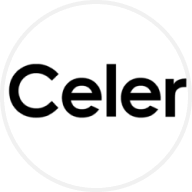
MAGIC
Magic price
$0.21420
+$0.0022000
(+1.03%)
Price change from 00:00 UTC until now

How are you feeling about MAGIC today?
Share your sentiments here by giving a thumbs up if you’re feeling bullish about the coin or a thumbs down if you’re feeling bearish.
Vote to view results
Magic market info
Market cap
Market cap is calculated by multiplying the circulating supply of a coin with its latest price.
Market cap = Circulating supply × Last price
Market cap = Circulating supply × Last price
Circulating supply
Total amount of a coin that is publicly available on the market.
Market cap ranking
A coin's ranking in terms of market cap value.
All-time high
Highest price a coin has reached in its trading history.
Market cap
$67.16M
Circulating supply
312,375,072 MAGIC
Market cap ranking
221
24h high
$0.21570
24h low
$0.18990
All-time high
$6.4920
MAGIC calculator


Magic price performance in USD
The current price of Magic is $0.21420. Since 00:00 UTC, Magic has increased by +1.04%. It currently has a circulating supply of 312,375,072 MAGIC and a maximum supply of 347,714,007 MAGIC, giving it a fully diluted market cap of $67.16M. At present, the Magic coin holds the 221 position in market cap rankings. The Magic/USD price is updated in real-time.
Today
$0.0022000
+1.03%
7 days
-$0.03040
-12.43%
30 days
-$0.12400
-36.67%
3 months
-$0.35750
-62.54%
Popular Magic conversions
Last updated: 03/01/2025, 13:04
| 1 MAGIC to USD | $0.21500 |
| 1 MAGIC to PHP | ₱12.4571 |
| 1 MAGIC to EUR | €0.20716 |
| 1 MAGIC to IDR | Rp 3,554.31 |
| 1 MAGIC to GBP | £0.17100 |
| 1 MAGIC to CAD | $0.31103 |
| 1 MAGIC to AED | AED 0.78961 |
| 1 MAGIC to VND | ₫5,494.51 |
About Magic (MAGIC)
- Official website
- White Paper
- Github
- Block explorer
About third-party websites
About third-party websites
By using the third-party website ("TPW"), you accept that any use of the TPW will be subject to and governed by the terms of the TPW. Unless expressly stated in writing, OKX and its affiliates ("OKX") are not in any way associated with the owner or operator of the TPW. You agree that OKX is not responsible or liable for any loss, damage and any other consequences arising from your use of the TPW. Please be aware that using a TPW may result in a loss or diminution of your assets.
Magic FAQ
How does MAGIC ensure its security?
Magic (MAGIC) and the Treasure network are established on the Arbitrum chain, a Layer 2 scaling solution developed on the Ethereum blockchain. This setup enables MAGIC to inherit the security attributes of Ethereum's Proof of Stake (PoS) consensus mechanism.
What is MAGIC?
MAGIC serves as a versatile cross-game digital currency that spans across games, decentralized applications (dApps), metaverses, and communities within Web3.
Where can I buy MAGIC tokens?
Easily buy MAGIC tokens on the OKX cryptocurrency platform. OKX’s spot trading terminal includes the MAGIC/USDT trading pair.
You can also swap your existing cryptocurrencies, including XRP (XRP), Cardano (ADA), Solana (SOL), and Chainlink (LINK), for MAGIC with zero fees and no price slippage by using OKX Convert.
How much is 1 Magic worth today?
Currently, one Magic is worth $0.21420. For answers and insight into Magic's price action, you're in the right place. Explore the latest Magic charts and trade responsibly with OKX.
What is cryptocurrency?
Cryptocurrencies, such as Magic, are digital assets that operate on a public ledger called blockchains. Learn more about coins and tokens offered on OKX and their different attributes, which includes live prices and real-time charts.
When was cryptocurrency invented?
Thanks to the 2008 financial crisis, interest in decentralized finance boomed. Bitcoin offered a novel solution by being a secure digital asset on a decentralized network. Since then, many other tokens such as Magic have been created as well.
Will the price of Magic go up today?
Check out our Magic price prediction page to forecast future prices and determine your price targets.
Monitor crypto prices on an exchange
Watch this video to learn about what happens when you move your money to a crypto exchange.
Disclaimer
The social content on this page ("Content"), including but not limited to tweets and statistics provided by LunarCrush, is sourced from third parties and provided "as is" for informational purposes only. OKX does not guarantee the quality or accuracy of the Content, and the Content does not represent the views of OKX. It is not intended to provide (i) investment advice or recommendation; (ii) an offer or solicitation to buy, sell or hold digital assets; or (iii) financial, accounting, legal or tax advice. Digital assets, including stablecoins and NFTs, involve a high degree of risk, can fluctuate greatly. The price and performance of the digital assets are not guaranteed and may change without notice. OKX does not provide investment or asset recommendations. You should carefully consider whether trading or holding digital assets is suitable for you in light of your financial condition. Please consult your legal/tax/investment professional for questions about your specific circumstances. For further details, please refer to our Terms of Use and Risk Warning. By using the third-party website ("TPW"), you accept that any use of the TPW will be subject to and governed by the terms of the TPW. Unless expressly stated in writing, OKX and its affiliates (“OKX”) are not in any way associated with the owner or operator of the TPW. You agree that OKX is not responsible or liable for any loss, damage and any other consequences arising from your use of the TPW. Please be aware that using a TPW may result in a loss or diminution of your assets.
MAGIC calculator


































